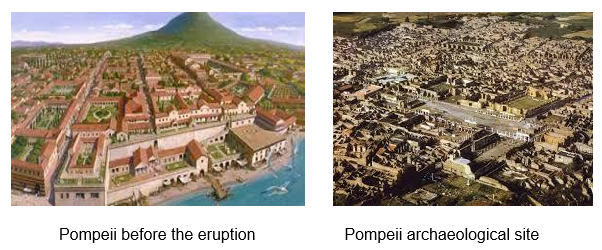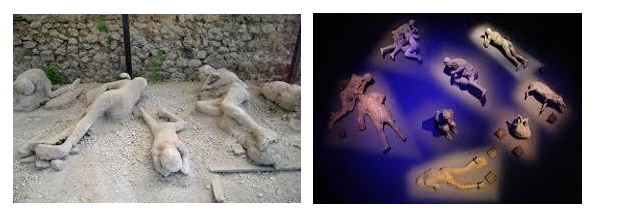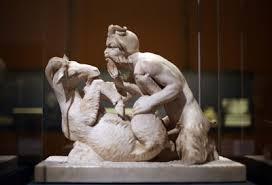Throughout history, archaeological endeavours have resulted in the discovery of sites with a diverse and rich historical heritage. One example of these discoveries is Pompeii, which is a popular archaeological site situated in the Campania region of Italy. History relates that Pompeii was a prosperous Roman town near the present-day Bay of Naples. In the year 79 AD, the town was buried under multiple layers of volcanic ashes, pumice and other forms of debris when the adjacent volcano, Mount Vesuvius erupted.

In light of this brief background, the discovery of Pompeii as an archaeological site was thus a rediscovery of the ancient town of Pompeii. Intriguingly, the site was discovered and reburied only to be rediscovered a century and a half later. On the first occasion, workers digging an underground channel meant to divert river Sarno bumped into the ancient walls of the long-forgotten town, but Domenico Fontana, the architect in charge, saw it fit to rebury the site due to the sexual explicitness of the items and imagery they came across. The official discovery of Pompeii as an archaeological site occurred in 1748. On this occasion, the discovery resulted from a deliberate excavation by Rocque Joaquin de Alcubierre.
After the official discovery of Pompeii, excavation efforts intensified under the stewardship of Karl Weber. Francesco La Vega succeeded him, in 1764. La Vega remained in charge of the excavation at Pompeii until 1804 when his brother Pietro took over. Pietro’s efforts to oversee the excavation at Pompeii were reinforced by Christophe Saliceti when the French took over the region.
In 1863, Giuseppe Fiorelli took over the reins of leadership as the director of excavation at Pompeii. His leadership added a new dimension to the excavation. He was the first director to take notice of the hollows that were left by the bodies of dead people, animals and plants and came up with a mechanism of injecting plaster into the hollows to recreate their shapes. In addition, he introduced a novel method of excavation, which enhanced the preservation of most of the items that were unearthed. Previously, streets were uncovered first so that workers would excavate buildings from the ground towards the roof. Fiorelli’s approach, on the other hand, entailed excavating from the top towards the ground to allow more data to be collected from the debris that covered the town was loose and needed careful handling.

After Fiorelli, there followed Michele Ruggiero, Giulio De Petra, Ettore Pais, Antonio Sogliano, and Vittorio Spinazzola as overseers of the excavation at Pompeii. During this time, the need to reinstate the roofs of the buildings to preserve frescoes and mosaics in the buildings arose.
The excavation unearthed numerous items, some of which are now preserved at different locations near Pompeii. Others that were not movable are preserved in situ. These recovered items include entire buildings, frescoes, artifacts, and mosaics. Further, the skeletons of people and animals lying in various positions were found in hollows that were left by their decomposed bodies. Most of these discoveries were well preserved since they were not reachable by moisture or air.
The ubiquity of erotic imagery in the Pompeii finds was astounding. Reportedly, almost every artifact that was recovered was hedonistic in nature. In addition, most of the frescoes, paintings and mosaics that were unearthed depicted oversized phalluses or male and female figures copulating in a variety of positions. An extreme example of this imagery features a sculpture of a man copulating with a goat. The sexual explicitness of most of the finds resulted in most of them being concealed until many years later. This aspect also justifies Fontana’s decision to rebury Pompeii the first time it was discovered.

Despite the controversies associated with the items that were found in Pompeii, the site has been open to visitors for over 250 years now. About two-thirds of the ancient town stand excavated giving visitors a wide area to explore. Pompeii reportedly attracts close to three million visitors annually. The ever-growing number of visitors has occasioned concerns over the pressure on the site. Efforts have been undertaken to redirect visitors to neighboring attractions to ease the pressure.
The key attractions at Pompeii include the buildings, frescoes, and the ruins of the once state-of-the-art facilities such as the amphitheater and the Temple of Apollo. It is however important to point out that despite two-thirds of the town having been excavated, only less than a third of the excavated area is open to visitors. Most buildings are only viewed from the outside. The artifacts that were moved from Pompeii are mostly preserved in the Naples National Archaeological Museum not far from Pompeii. UNESCO declared Pompeii a World Heritage site in the year 1997. In addition, it stands out as an important part of Vesuvius National Park. Apparently, there is more to Pompeii than meets the eye, making it a point of interest for many years to come.